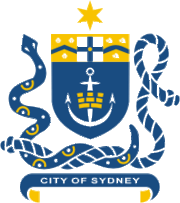Sydney and Melbourne expanded their successful CitySwitch Green Office program, which is now improving businesses’ energy performance in cities across Australia.
Initiated by Sydney and Melbourne, the CitySwitch Green Office program provides training, network access, and tracking tools to businesses to help them reduce day-to-day energy use and improve their overall sustainability performance. Although Melbourne and Sydney have been collaborating for a decade, the program recently expanded to seven cities, and now partners with both states and the federal government. To date, CitySwitch supports 12% of Australia’s commercial office space. As demonstrated by its widespread adoption, the program has positively impacted businesses’ energy performances in participating jurisdictions. On energy and carbon, verified data shows that signatory businesses deliver 25% savings on average during their time in the program. In 2015 alone, the program’s 1,500 projects achieved almost 350,000 metric tons of CO2 reductions.
638K metric tons of CO2 reduction have been accumulated by CitySwitch members since 2011
Cities100 – 2016
In addition to a wide business network, the program also provides structured performance management tools that help measure and quantify outcomes and integrate other business priorities like costs, employee health, social sustainability, and technology. In 2015, nearly 30% of completed CitySwitch projects related to health, technology, or staff engagement, and the program’s members’ combined actions helped avoid $9.7 million in energy-related expenses.
The challenge
In Australia, building owners are not responsible for their tenants’ environmental impacts, creating not only a knowledge and resource gap but also a split incentive for action. Sydney and Melbourne’s CitySwitch bridges that gap by providing office-based businesses with the tools to undertake energy efficient measures as well as a large network to share experiences.

Co-benefits
Economic Cost savings is a large part of the CitySwitch program, and, in three years, members have saved more than $26 million in avoided energy costs.
Environmental Since 2011, 850 CitySwitch projects have committed to expand efforts to decrease waste and increase renewable energy use.
Health Since 2011, the program’s signatory businesses have undertaken 130 projects to improve the well-being and health of employees.
About Sydney
Sydney is the state capital of New South Wales and the most populous city in Australia and Oceania. As of June 2016 Sydney’s estimated population was 5,029,768. Furthermore, 36 percent of the population reported having been born overseas. Despite being one of the most expensive cities in the world, the 2014 Mercer Quality of Living Survey ranks Sydney tenth in the world in terms of quality of living, making it one of the most livable cities.
About Melbourne
Melbourne is the capital and most populous city of the Australian state of Victoria, and the second-most populous city in Australia and Oceania. Melbourne rates highly in education, entertainment, health care, research and development, tourism and sport, making it the world’s most liveable city—for the seventh year in a row in 2017, according to the Economist Intelligence Unit.



